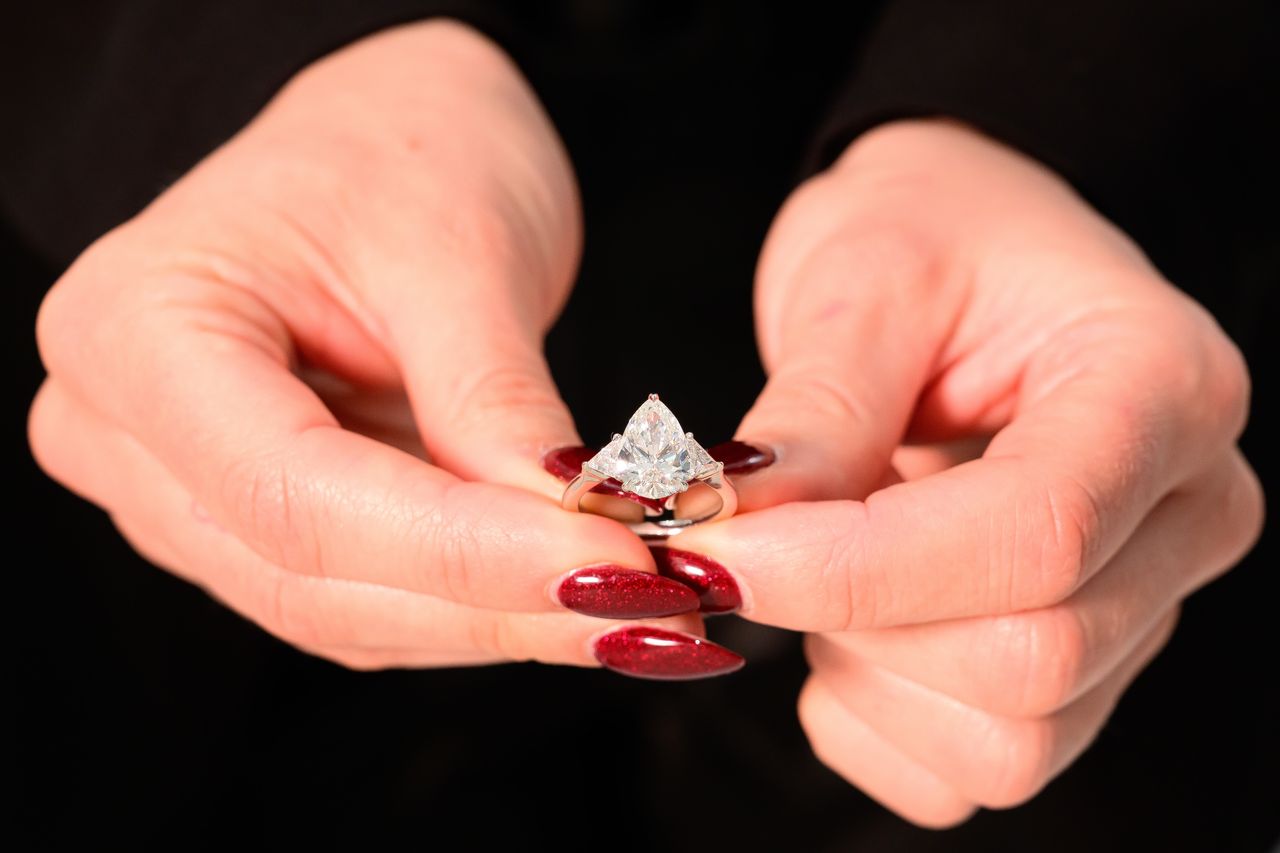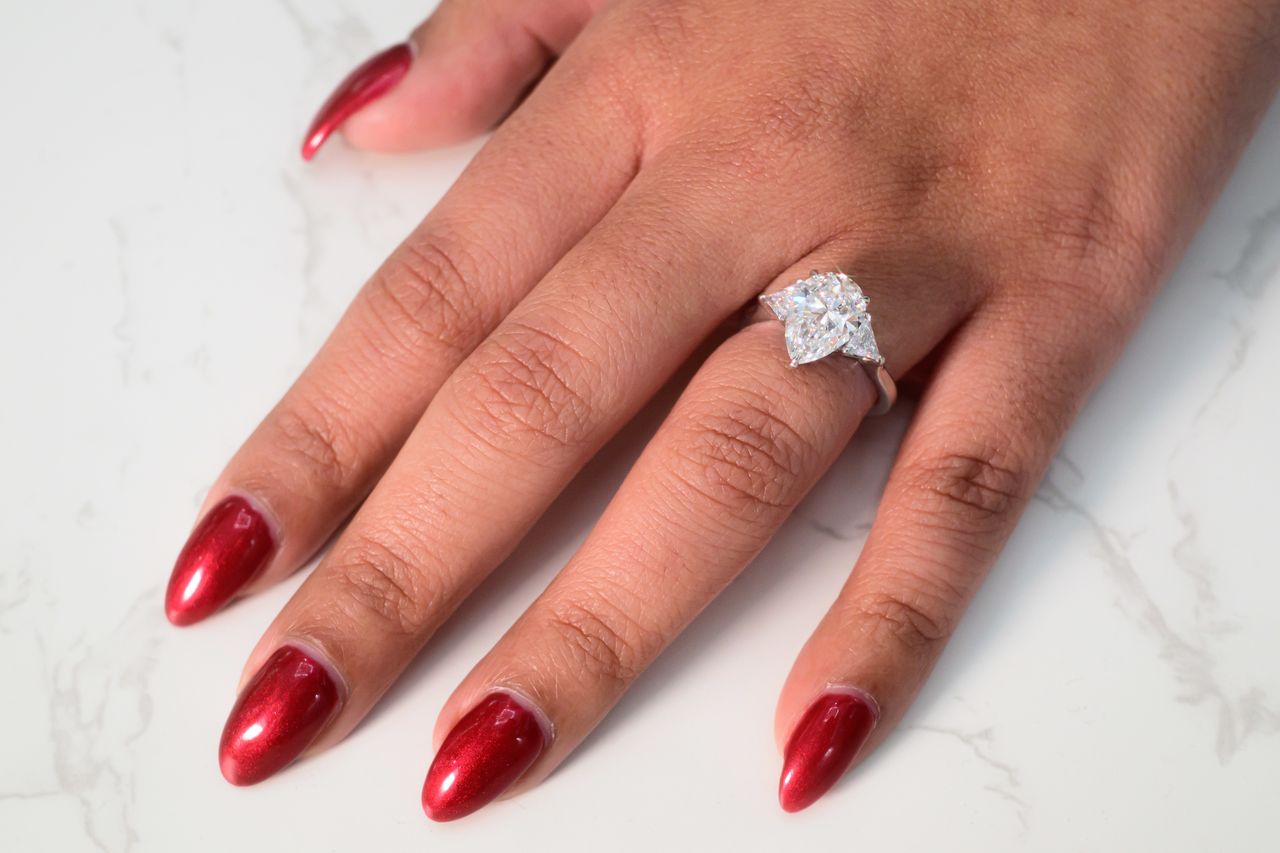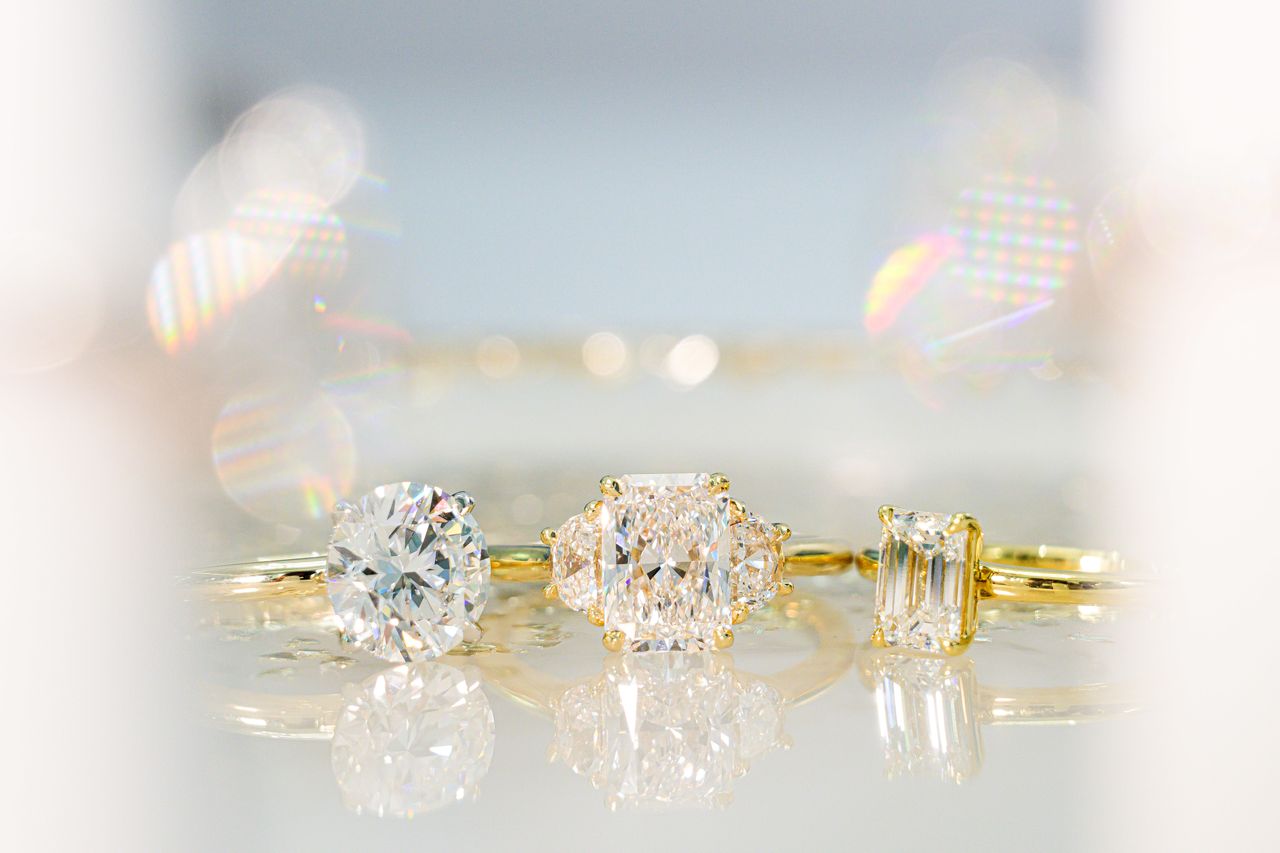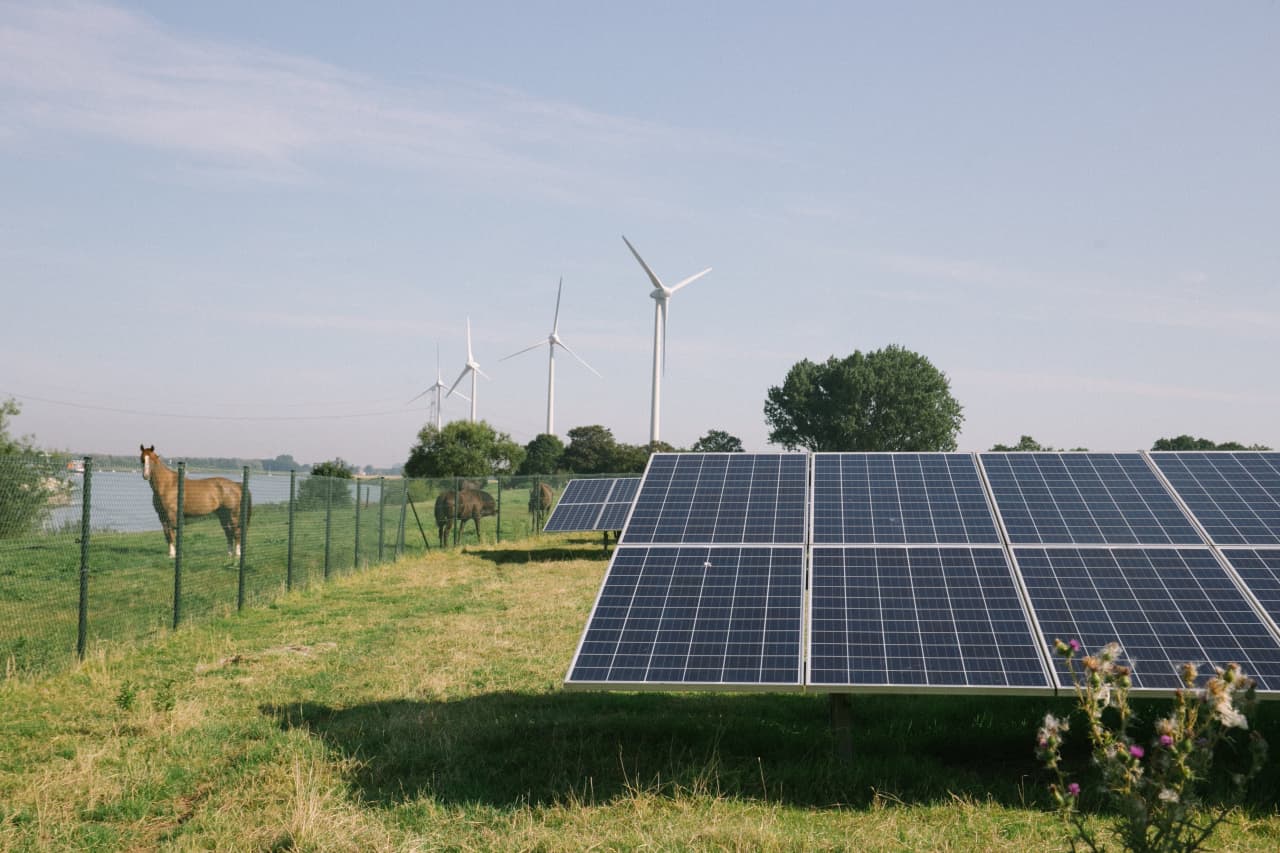The Embarrassment of Having to Explain Your ‘Monster’ Diamond Ring
Couples find that lab-grown diamonds make it cheaper to get engaged or upgrade to a bigger ring. But there are rocky moments.
Wedding planner Sterling Boulet has some advice for brides-to-be regarding lab-grown diamonds, which cost a fraction of the natural ones.
“If you’re trying to get your man to propose, they’ll propose faster if you offer this as an option,” says Boulet, of Raleigh, N.C. Recently, she adds, a friend’s fiancé “thanked me the next three times I saw him” for telling him about the cheaper lab-made option.
Man-made diamonds are catching on, despite some lingering stigma. This year was the first time that sales of lab-made and natural mined loose diamonds, primarily used as center stones in engagement rings, were split evenly, according to data from Tenoris, a jewellery and diamond trend-analytics company.
The rise of lab-made stones, however, is bringing up quirks alongside the perks. Now that blingier engagement rings—above two or three carats—are more affordable, more people are dealing with the peculiarities of wearing rather large rocks.

Esther Hare, a 5-foot-11-inch former triathlete, sought out a 4.5-carat lab-made oval-shaped diamond to fit her larger hands as a part of her vow renewal in Hawaii last year. It was a far cry from the half-carat ring her husband proposed with more than 25 years ago and the 1.5-carat upgrade they purchased 10 years ago. Hare, 50, who lives in San Jose, Calif., and works in high tech, chose a $40,000 lab-made diamond because “it’s nuts” to have to spend $100,000 on a natural stone. “It had to be big—that was my vision,” she says.
But the size of the ring has made it less practical at times. She doesn’t wear it for athletic training and swaps in her wedding band instead. And she is careful to leave it at home when traveling. “A lot of times I won’t take it on vacation because it’s just a monster,” she says.
The average retail price for a one-carat lab-made loose diamond decreased to $1,426 this year from $3,039 in 2020, according to the Tenoris data. Similar-sized loose natural diamonds cost $5,426 this year, compared with $4,943 in 2020.
Lab-made diamonds have essentially the same chemical makeup as natural ones, and look the same, unless viewed through sophisticated equipment that gauges the characteristics of emitted light.
At Ritani, an online jewellery retailer, lab-made diamond sales make up about 70% of the diamonds sold, up from roughly 30% two years ago, says Juliet Gomes, head of customer service at the company, based in White Plains, N.Y.
Ritani sometimes records videos of the lab-diamonds pinging when exposed to a “diamond tester,” a tool that judges authenticity, to show customers that the man-made rocks behave the same as natural ones. “We definitely have some deep conversations with them,” Gomes says.
Not all gem dealers are rolling with these stones.
Philadelphia jeweller Steven Singer only stocks the natural stuff in his store and is planning a February campaign to give about 1,000 one-carat lab-made diamonds away free to prove they are “worthless.” Anyone can sign up online and get one in the mail; even shipping is free. “I’m not selling Frankensteins that were built in a lab,” Singer says.
Some brides are turned off by the larger bling now allowed by the lower prices.When her now-husband proposed with a two-carat lab-grown engagement ring, Tiffany Buchert, 40, was excited about the prospect of marriage—but not about the size of the diamond, which she says struck her as “costume jewellery-ish.”
“I said yes in the moment, of course, I didn’t want it to be weird,” says the physician assistant from West Chester, Pa.
But within weeks, she says, she fessed up, telling her fiancé: “I think I hate this ring.”
The couple returned it and then bought a one-carat natural diamond for more than double the price.

When Boulet, the wedding planner in Raleigh, got engaged herself, she was over the moon when her fiancé proposed with a 2.3 carat lab-made diamond ring. “It’s very shiny, we were almost worried it was too shiny and was going to look fake,” she says.
It doesn’t, which presents another issue—looking like someone who really shelled out for jewellery. Boulet will occasionally volunteer that her diamond ring came from a lab.
“I don’t want people to think I’m putting on airs, or trying to be flashier than I am,” she says.
For Daniel Teoh, a 36-year-old software engineer outside of Detroit, buying a cheaper lab-made diamond for his fiancée meant extra room in his $30,000 ring budget.
Instead of a bigger ring, he got her something they could both enjoy. During a walk while on an annual ski trip to South Lake Tahoe, Calif., Teoh popped the question and handed his now-wife a handmade wooden box that included a 2.5-carat lab-made diamond ring—and a car key.
She put on the ring, celebrated with both of their sisters and a friend, who was the unofficial photographer of the happy event, and then they drove back to the house. There, she saw a 1965 Mustang GT coupe in Wimbledon white with red stripes and a bow on top.
Looking back, Teoh says, it was still the diamond that made the big first impression.
“It wasn’t until like 15 minutes later she was like ‘so, what’s with this key?’” he adds.
 Copyright 2020, Dow Jones & Company, Inc. All Rights Reserved Worldwide. LEARN MORE
Copyright 2020, Dow Jones & Company, Inc. All Rights Reserved Worldwide. LEARN MORE
This stylish family home combines a classic palette and finishes with a flexible floorplan
Just 55 minutes from Sydney, make this your creative getaway located in the majestic Hawkesbury region.
Impact investing is becoming more mainstream as larger, institutional asset owners drive more money into the sector, according to the nonprofit Global Impact Investing Network in New York.
In the GIIN’s State of the Market 2024 report, published late last month, researchers found that assets allocated to impact-investing strategies by repeat survey responders grew by a compound annual growth rate (CAGR) of 14% over the last five years.
These 71 responders to both the 2019 and 2024 surveys saw their total impact assets under management grow to US$249 billion this year from US$129 billion five years ago.
Medium- and large-size investors were largely responsible for the strong impact returns: Medium-size investors posted a median CAGR of 11% a year over the five-year period, and large-size investors posted a median CAGR of 14% a year.
Interestingly, the CAGR of assets held by small investors dropped by a median of 14% a year.
“When we drill down behind the compound annual growth of the assets that are being allocated to impact investing, it’s largely those larger investors that are actually driving it,” says Dean Hand, the GIIN’s chief research officer.
Overall, the GIIN surveyed 305 investors with a combined US$490 billion under management from 39 countries. Nearly three-quarters of the responders were investment managers, while 10% were foundations, and 3% were family offices. Development finance institutions, institutional asset owners, and companies represented most of the rest.
The majority of impact strategies are executed through private-equity, but public debt and equity have been the fastest-growing asset classes over the past five years, the report said. Public debt is growing at a CAGR of 32%, and public equity is growing at a CAGR of 19%. That compares to a CAGR of 17% for private equity and 7% for private debt.
According to the GIIN, the rise in public impact assets is being driven by larger investors, likely institutions.
Private equity has traditionally served as an ideal way to execute impact strategies, as it allows investors to select vehicles specifically designed to create a positive social or environmental impact by, for example, providing loans to smallholder farmers in Africa or by supporting fledging renewable energy technologies.
Future Returns: Preqin expects managers to rely on family offices, private banks, and individual investors for growth in the next six years
But today, institutional investors are looking across their portfolios—encompassing both private and public assets—to achieve their impact goals.
“Institutional asset owners are saying, ‘In the interests of our ultimate beneficiaries, we probably need to start driving these strategies across our assets,’” Hand says. Instead of carving out a dedicated impact strategy, these investors are taking “a holistic portfolio approach.”
An institutional manager may want to address issues such as climate change, healthcare costs, and local economic growth so it can support a better quality of life for its beneficiaries.
To achieve these goals, the manager could invest across a range of private debt, private equity, and real estate.
But the public markets offer opportunities, too. Using public debt, a manager could, for example, invest in green bonds, regional bank bonds, or healthcare social bonds. In public equity, it could invest in green-power storage technologies, minority-focused real-estate trusts, and in pharmaceutical and medical-care company stocks with the aim of influencing them to lower the costs of care, according to an example the GIIN lays out in a separate report on institutional strategies.
Influencing companies to act in the best interests of society and the environment is increasingly being done through such shareholder advocacy, either directly through ownership in individual stocks or through fund vehicles.
“They’re trying to move their portfolio companies to actually solving some of the challenges that exist,” Hand says.
Although the rate of growth in public strategies for impact is brisk, among survey respondents investments in public debt totaled only 12% of assets and just 7% in public equity. Private equity, however, grabs 43% of these investors’ assets.
Within private equity, Hand also discerns more evidence of maturity in the impact sector. That’s because more impact-oriented asset owners invest in mature and growth-stage companies, which are favored by larger asset owners that have more substantial assets to put to work.
The GIIN State of the Market report also found that impact asset owners are largely happy with both the financial performance and impact results of their holdings.
About three-quarters of those surveyed were seeking risk-adjusted, market-rate returns, although foundations were an exception as 68% sought below-market returns, the report said. Overall, 86% reported their investments were performing in line or above their expectations—even when their targets were not met—and 90% said the same for their impact returns.
Private-equity posted the strongest results, returning 17% on average, although that was less than the 19% targeted return. By contrast, public equity returned 11%, above a 10% target.
The fact some asset classes over performed and others underperformed, shows that “normal economic forces are at play in the market,” Hand says.
Although investors are satisfied with their impact performance, they are still dealing with a fragmented approach for measuring it, the report said. “Despite this, over two-thirds of investors are incorporating impact criteria into their investment governance documents, signalling a significant shift toward formalising impact considerations in decision-making processes,” it said.
Also, more investors are getting third-party verification of their results, which strengthens their accountability in the market.
“The satisfaction with performance is nice to see,” Hand says. “But we do need to see more about what’s happening in terms of investors being able to actually track both the impact performance in real terms as well as the financial performance in real terms.”
This stylish family home combines a classic palette and finishes with a flexible floorplan
Just 55 minutes from Sydney, make this your creative getaway located in the majestic Hawkesbury region.






















